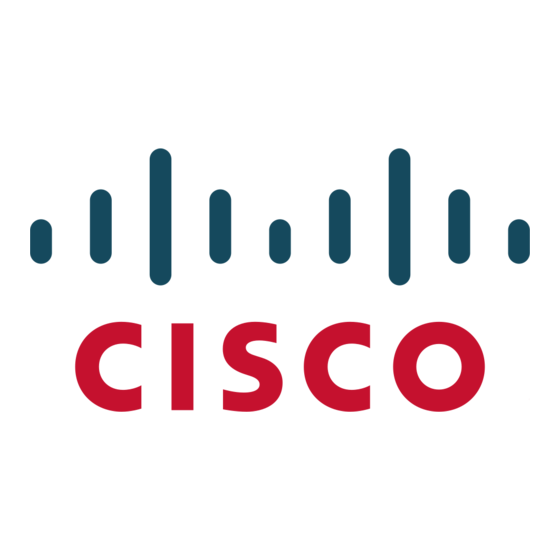Cisco 3560G-48PS - Catalyst Switch 브로셔 - 페이지 2
{카테고리_이름} Cisco 3560G-48PS - Catalyst Switch에 대한 브로셔을 온라인으로 검색하거나 PDF를 다운로드하세요. Cisco 3560G-48PS - Catalyst Switch 8 페이지. 10/100/1000 hardware configurations
Cisco 3560G-48PS - Catalyst Switch에 대해서도 마찬가지입니다: 제품 게시판 (5 페이지), 제품 지원 게시판 (6 페이지), 사양 (3 페이지), 기술 사양 (8 페이지), 데이터시트 (23 페이지), 설명 (1 페이지), 제품 지원 게시판 (5 페이지)

Brochure
Maximum power availability for a converged voice and data network is attainable when a Cisco
Catalyst 3560 Series switch is combined with the Cisco RPS 675 Redundant Power System for
transparent protection against internal power supply failures and an uninterruptible power supply
(UPS) system to safeguard against power outages.
Gigabit Ethernet
At speeds of 1000 Mbps, Gigabit Ethernet provides the bandwidth to meet new and evolving
network demands, alleviate bottlenecks, and boost performance while increasing the return on
existing and new infrastructure investments. Today's workers are placing higher demands on
networks, running multiple, concurrent applications. For example, a worker joins a team
conference call through an IP videoconference, sends a 10-MB spreadsheet to meeting
participants, broadcasts the latest marketing video for the team to evaluate, and queries the
customer relationship management (CRM) database for the latest real-time feedback. Meanwhile,
a multiple-gigabyte system backup starts in the background, taking advantage of simple and
affordable network attached storage (NAS) to comply with regulatory record keeping requirements
such as Sarbanes-Oxley.
The Cisco Catalyst 3560 Series can scale the access network to 1 Gbps over existing Category 5
copper cabling and make the most of the desktops and notebooks that are now shipping with
Gigabit Ethernet network interface cards (NICs) and higher PC bus speeds for full bandwidth
utilization. In addition to being easy to deploy, Gigabit Ethernet networks are simpler to maintain
with the new Cisco Time Domain Reflectometry (TDR) that helps verify existing cabling.
The Gigabit Ethernet models of the Cisco Catalyst 3560 Series also facilitate high-performance
Grid and distributed computing in addition to preparing your network to deploy software
applications such as Microsoft Exchange, as well as Microsoft Vista's remote imaging, data
synchronization, and computer-to-computer search capabilities.
Enhanced Security
With the wide range of security features that the Cisco Catalyst 3560 Series offers, businesses
can protect important information, keep unauthorized people off the network, guard privacy, and
maintain uninterrupted operation. The Cisco Catalyst 3560 Series supports a comprehensive set of
security features for connectivity and access control, including network admission control (NAC),
ACLs, Dynamic ARP Inspection, IP Source Guard, VPN Routing/Forwarding Lite (VRF Lite), port-
level security, and identity-based network services with 802.1x and extensions. These features
increase LAN security; protect passwords and configuration information; offer options for network
security based on users, ports, or MAC addresses; and help quicken responses to intruder and
hacker detection. NAC helps organizations to limit damage from viruses and worms by enforcing
security-policy compliance on endpoint devices.
Availability and Scalability
The Cisco Catalyst 3560 Series is equipped with a robust set of features that allow for network
scalability and higher availability through IP routing as well as a complete suite of Spanning Tree
Protocol enhancements aimed to maximize availability in a Layer 2 network. Enhancements to the
standard Spanning Tree Protocol, such as Per-VLAN Spanning Tree Plus (PVST+), Uplink Fast,
and Port Fast, as well as innovations such as Flex Links, maximize network uptime. PVST+ allows
for Layer 2 load sharing on redundant links to efficiently use the extra capacity inherent in a
redundant design. Uplink Fast, Port Fast, and Backbone Fast all greatly reduce the standard 30- to
60-second Spanning Tree Protocol convergence time.
All contents are Copyright © 1992–2006, 2009 Cisco Systems, Inc. All rights reserved. This document is Cisco Public Information.
Page 2 of 8
